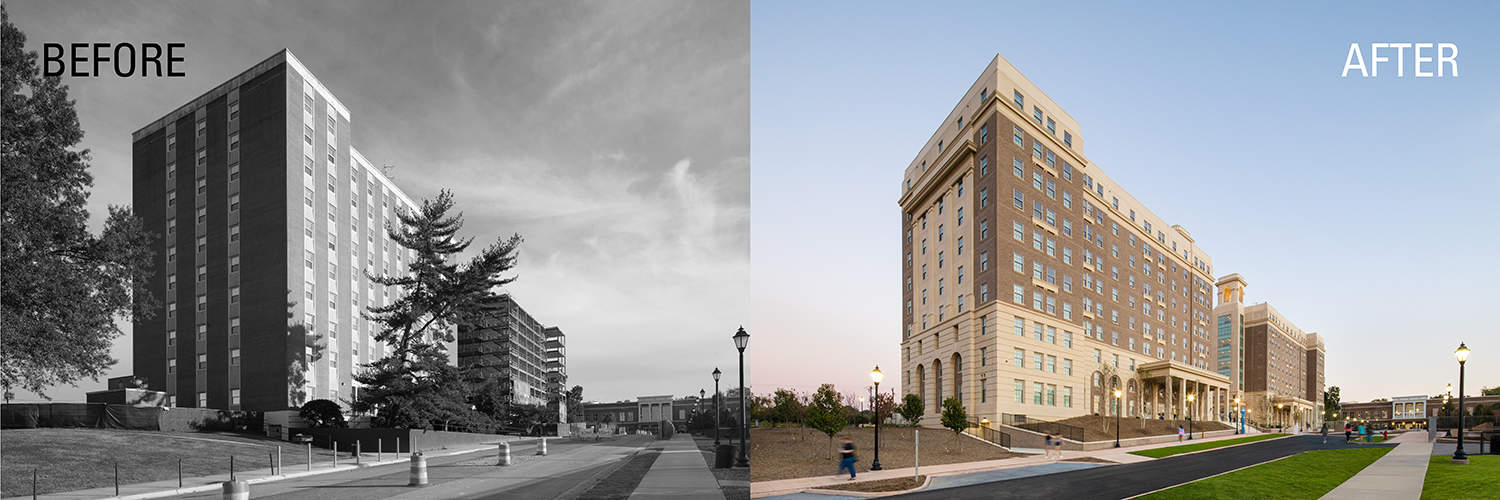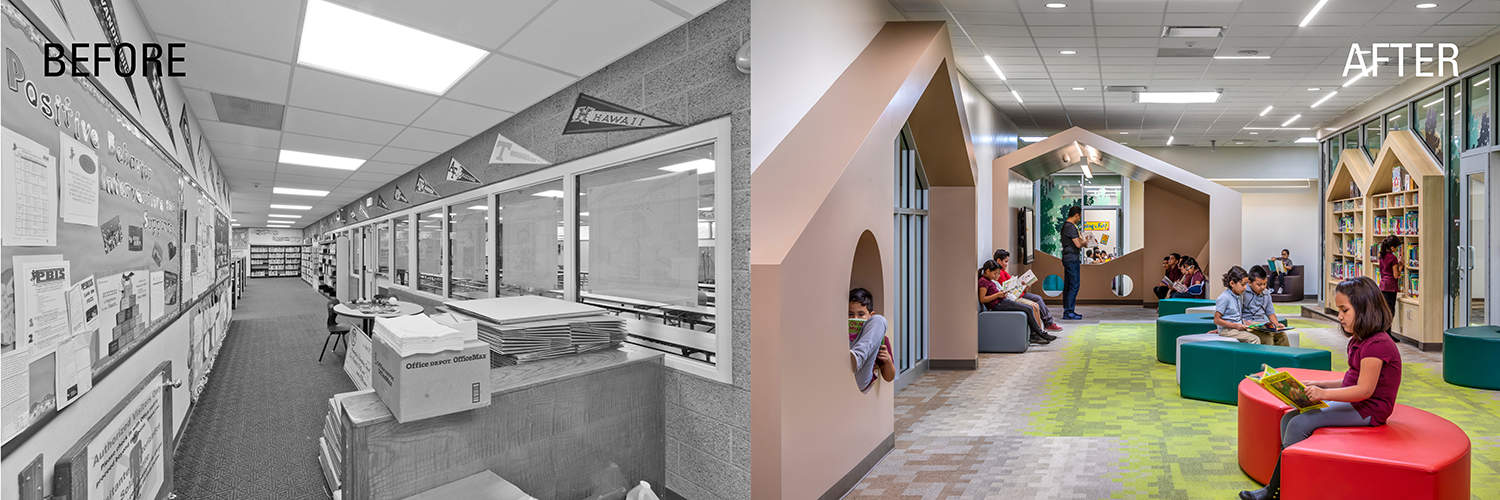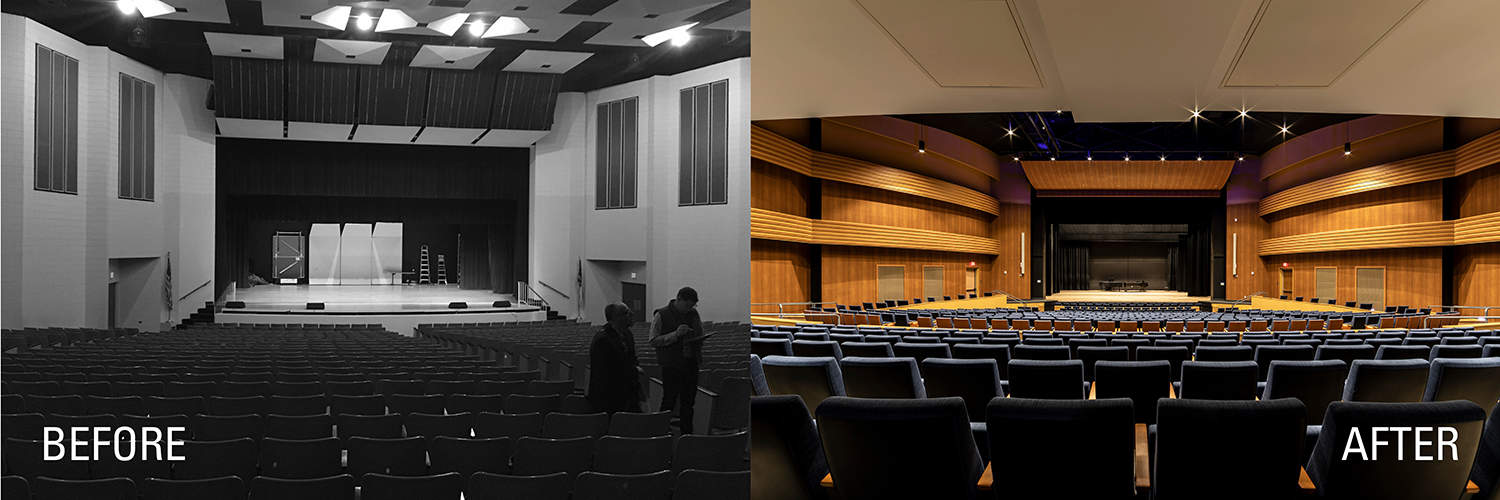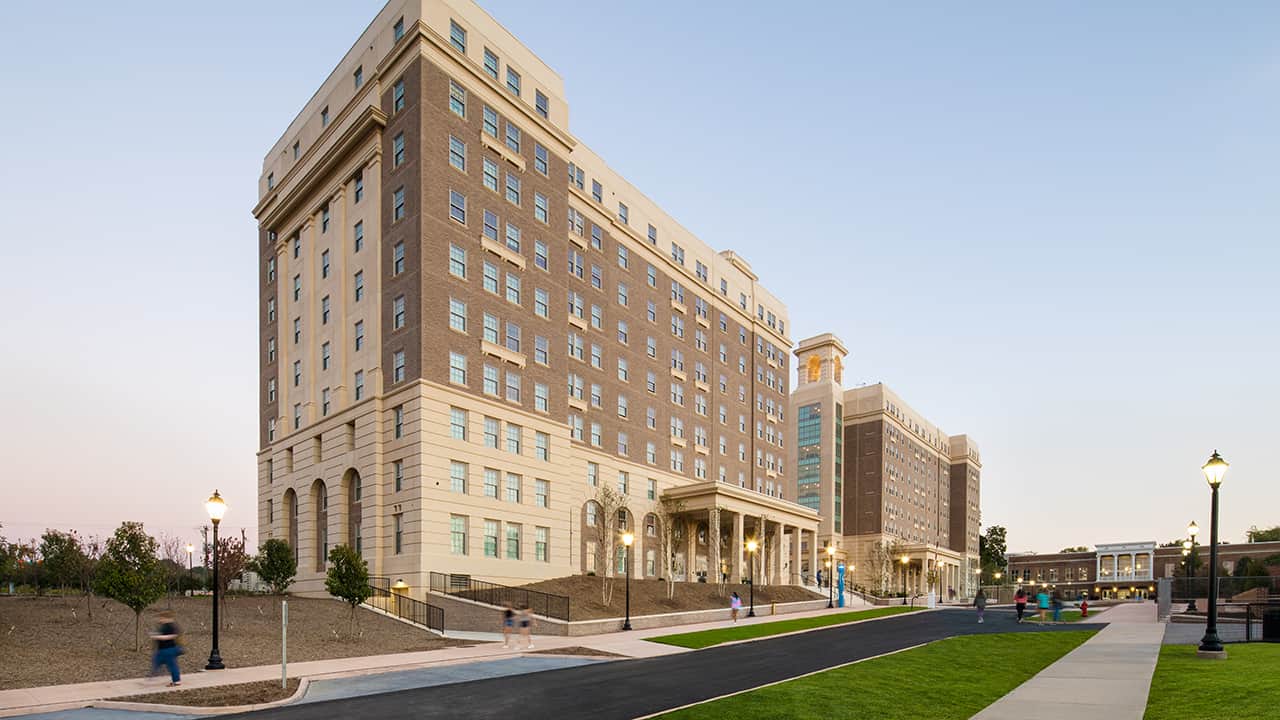Many Universities and School Systems have beautiful, historic, turn-of-the-century buildings sharing the campus or school district with more utilitarian buildings that were constructed in the 60s, 70s, and 80s. Many of these 40-60-year-old buildings need serious repair or replacement, and some have already reached their lifespan. Recognizing that states, counties and cities have limited funding for construction in the near-term, there is an increased need to carefully look at existing buildings and maximize their use. The decision to renovate or replace is most often a financial one but there are several other factors to consider. Little has been involved in several complex and transformative renovations and additions, learning valuable lessons from these experiences that are worth sharing.

Here are ten things to consider when deciding between a building renovation or replacement:
- Look closely at the quality of the building structure and its structural system. Does the structural system cost-effectively lend itself to changes that will accommodate future needs? Codes and structural requirements change quite a bit over the lifespan of a building, so it is important to understand those implications.
- Look closely at all envelope conditions. Many buildings constructed over 50 years ago have poorly performing thermal envelopes that can cause extensive damage to a building, even after spending significant time and money on a major interior renovation. Additionally, energy codes have changed, requiring far tighter and higher performing building envelopes. Analyzing the roof materials and potential replacement is also part of the envelope assessments.
- When assessing the basic conditions of the envelope, determine if the windows need replacement. Many older buildings have window systems that are single pane windows and are not thermally broken, resulting in lower building performance. Flashing, over an extensive period, may deteriorate resulting in moisture challenges. Additionally, there have been tremendous improvements in the performance of glazing systems admitting needed daylight while reducing heat gain in the summer and heat loss in the winter.
- Assessing the HVAC system is one of the most challenging aspects to consider when renovating. Is the main system tied to a central plant and does that still make sense? Is the building operating efficiently under the current system? Will the equipment that is serving the building need to be replaced in the future? Should it be replaced in-kind or should new systems be considered? Is the system dependent primarily on fossil fuels? If so, is there an opportunity for the building to be changed to an electric heating and cooling system, ridding itself from dirty fossil fuels? These factors contribute significantly to the overall cost of renovating but need to be considered especially in light of recent system advances. Heating and cooling systems have become much simpler, more efficient and create healthier indoor environments. Clean energy is becoming more affordable; therefore, positioning the building to be easily adapted for clean energy is worth considering.
- Environmental assessments, particularly of hazardous materials, need to precede the full design of a renovation to understand the design implications, schedule and costs for a renovation. Once the assessments are complete, but prior to primary construction, time needs to be set aside to eliminate environmental concerns and hazardous materials by specialized contractors. If the project is only cosmetic in nature, and not disrupting conditions that would expose these hazardous materials, it may not be necessary to remove materials and incorporate this phase into the schedule.
- Many buildings constructed 50 years ago have very low floor to ceiling heights, limiting uses and making it challenging to incorporate all the utilities that now go into a new building. Renovated buildings should be sprinklered and will likely have additional systems overhead that were not part of the original building requirements. Some of these beyond sprinkler lines include current lighting, telecom, security, greater requirements for supply and return ductwork, and mechanical equipment. If the floor-to-floor dimensions of the building are not great enough to accommodate all these systems, it will likely result in a more expensive solution or a compromised design. Different building uses also require varying ceiling heights. Be sure to determine these early in the renovation process.
- Code and ADA implications need to be thoroughly examined. Most 50+-year-old buildings have several challenges regarding proper egress and accessibility. Some of these issues can be simple to address but that is not always the case. If there are space limitations it can result in major modifications reducing usable square footage or an expensive addition and other exterior modifications.
- Once it is determined that the building will undergo an extensive renovation, it is wise to bid the demolition early and perhaps separate from the main contract. This will ensure the contractor doing the renovation has a clear understanding of the conditions and can raise concerns earlier in the process, rather than later when it can be more expensive and likely adversely impacting schedule. It is not always easy to do this, so consider adding more buffer in the schedule and a greater contingency to address unforeseen conditions. Most older buildings are not well documented with as-builts and typically the conditions have been slightly modified over the decades presenting some of these unknown scenarios.
- Knowing whether the facility will be occupied or unoccupied during the renovation is very important to review upfront. This impacts schedule and usually results in phasing to minimize disruption. Clear communication and safety protocols must be set and abided by. Major renovations often require electrical and other system shutdowns – this as well as working hours need to be scheduled and communicated.
- In the end it is always important to ask if the renovation will ultimately serve the institution well. Though it is hard to predict the future, the institution and the architect need to ask, “If renovated, will the building meet the needs of not only the present, but the future?” The architectural and cultural value to the institution also needs to be examined. Although difficult to measure, historical and cultural value can often outweigh the intimidation of cost and complexity. Most renovations are far more sustainable than new building replacements and need to be rigorously considered before rashly demolishing for what may seem like a better solution. Costs should influence the decision, and normal rules of thumb suggest that if the renovation exceeds 75% of new construction it should be demolished. However, don’t let the cost be the only determining factor.



